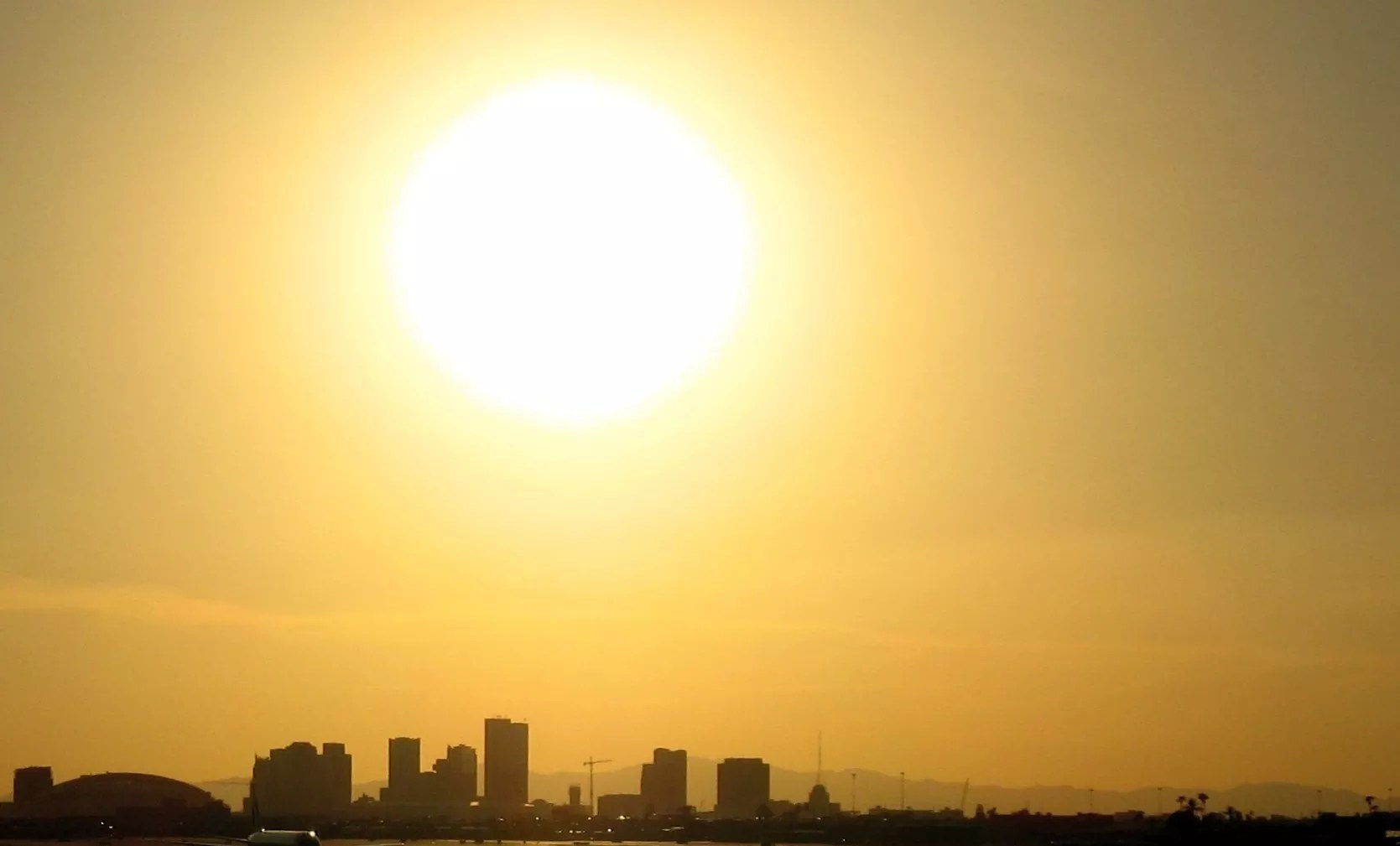

Audio By Carbonatix
You may want to dust off your car’s sun shield and lather on some sunscreen. For the first time in 2025, temperatures in the Valley are expected to hit 100 degrees this week.
According to the National Weather Service, Phoenix is expected to hit triple digits on Thursday, with a high of 101 degrees. Wednesday (forecasted high of 97) and Friday (102) could also pass the century mark.
If the first 100-degree day lands in that three-day span, it’ll have come earlier than normal. But it won’t be crazy early, either. According to NWS data, since 1980, the average first date of triple-degree temperatures is April 29. But temperatures hitting 100 degrees in early April isn’t uncommon.
Temperatures will continue to heat up through mid-week with highs well into the 90s by Wednesday before peaking at record or near record levels on Thu. and Fri. Much of the area will see a Moderate HeatRisk later this week, so remember to practice good heat safety. #azwx #cawx pic.twitter.com/9SvkjgQm3h
— NWS Phoenix (@NWSPhoenix) April 7, 2025
Will you step up to support New Times this year?
At New Times, we’re small and scrappy — and we make the most of every dollar from our supporters. Right now, we’re $17,250 away from reaching our December 31 goal of $30,000. If you’ve ever learned something new, stayed informed, or felt more connected because of New Times, now’s the time to give back.
Still, NWS Phoenix lead meteorologist Sean Benedict warned that people should take precautions. That means wearing light-fitting clothes, staying out of the sun, using sunscreen and drinking “more water than you think you need.”
“Whenever we get really hot this time of year, it can catch those people who are maybe not used to the heat a little off guard,” Benedict said.

Data: National Weather Service
When was Phoenix’s earliest 100-degree day?
Dating back to 1896, the earliest that Phoenix saw a 100-degree day was in 1988, when the city reached the mark on March 26. Phoenix almost broke that record earlier this month but fell just short, with temperatures reaching 99 degrees on March 25.
The rest of 1988 had reasonably average temperatures, starting out “a bit warm” but “fluctuating a lot,” Benedict said. After boiling in late March, Phoenix sat in the mid-60s in mid-to-late April that year.
What’s the Phoenix forecast going forward?
The next couple of weeks should bring above-normal temperatures. But that means mid-80s and low 90s, not over 100, Benedict said.
Summer temperatures won’t be “too much of a surprise,” with the Valley expecting above-normal temperatures, which Benedict noted has been the new normal “for the past decades.”
But after a dry winter, the Valley will see “a slight tilt toward normal precipitation” during the area’s monsoon season, so “maybe an earlier onset of the monsoon thunderstorms, or maybe things are a little bit more vigorous,” Benedict said.